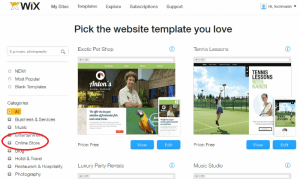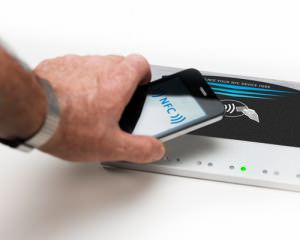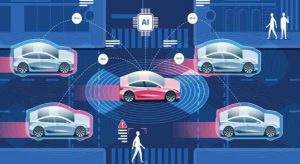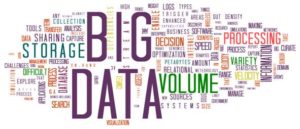The Role of Technology in Transforming Architectural Project Management
The availability of cutting-edge design and visualization tools is one of the most remarkable technological contributions to architecture.
Experts in the field now have the power to work more efficiently and provide higher-quality products thanks to the availability of cutting-edge solutions equivalent to architectural project management software.
It is integral to improving project management procedures because it has a profusion of features and functionalities.
This solution empowers managers and stakeholders by delivering seamless communication, effective marketing, and thorough documentation, from cost estimation to budgeting.
Here are some ways how that is achieved:
Cost Estimation & Budgeting

Project managers use cost estimating to plan for the time and money that will be spent on a job so that it can be finished successfully and under budget.
All of the costs associated with completing the project, from supplies to labour, have been included in the final cost estimate.
Cost Estimation is essential to ensure that enough time and money are allocated to complete a project successfully. When creating a budget, one sets a limit on how much money can be spent on the project as a whole.
Traditionally, industry professionals relied on manual methods and historical data to estimate project costs, which often led to inaccuracies and uncertainty.
However, with project management tools, managers now have access to accurate and up-to-date cost data.
It allows them to break down the task into individual components and assign amounts to each element, such as foundations, structural elements, finishes, and mechanical systems.
This can aid in defining quantities, specifying materials and their associated costs, and including labour and equipment expenses.
It also enables them to account for factors such as location, market conditions, and task complexity.
Marketing
The term “marketing” is used to describe a wide range of actions taken to raise brand awareness and, ultimately, sales.
Advertising may be the most well-known form of marketing, but many more aspects must be considered. It describes a company’s efforts to increase interest in a product or service.
Advertising, sales, and distribution are all components of marketing. Employees and affiliates provide certain kinds of advertising on a company’s behalf.
Employees can generate personalised email templates with an automated email marketing integration, as well as automate email campaigns and adapt messages to specific customer segments.
Throughout the course of the project, the application for project management can be configured to send them at crucial intervals, thereby maintaining client engagement and keeping them informed.
In addition, the incorporation of data analytics makes it easier for managers to monitor and evaluate the success of their efforts to promote products or services via email.
It is possible to monitor data such as the open rates of emails, click-through rates, and response rates, which provides vital information into the engagement and interest of customers.
These contribute to the improvement of marketing strategies as well as content optimisation.
CRM
A “Customer Relationship Management” (CRM) system is an application of software that allows business owners to keep tabs on their interactions with prospective customers and existing clients.
Small business customer relationship management software is an alternative to the disparate systems of record that many companies use to keep tabs on their customers.
A customer relationship management system manages information about your sales prospects and clients.
It also gathers all the forms, calls, emails, texts, meetings, proposals, transactions, and tasks that are connected to each lead and client.
Any member of your team can get to that information at the precise moment they need it to make a sale or provide exceptional service.
This application extends beyond the capabilities of standard project management software by granting developers the ability to monitor the progress of meetings.
This crucial feature informs managers about the status of ongoing engagements, ensuring that every important detail or opportunity is noticed.
With comprehensive visibility into meeting activities, they can seamlessly monitor the advancement of projects, identify potential bottlenecks, and swiftly address any challenges that arise.
This real-time information enhances decision-making and fosters effective collaboration and communication among team members, resulting in a synchronised and cohesive approach.
Other Technology Influences and Their Impact
Building Information Modeling (BIM)
BIM, or Building Information Modelling, is a computerised depiction of a building’s structural and operational details.
A building information model (BIM) is an authoritative repository of data spanning a facility’s entire lifecycle, from inception to deconstruction.
BIM is utilised to create and manage data during the planning, building, and running phases.
With BIM, data from several fields are combined to produce elaborate digital models, which are then stored and shared in the cloud for seamless, real-time teamwork.
Architects may use BIM to create a shared, collaborative model of the building project. This contains detailed information about the design elements, components, and systems.
Managers can then access up-to-date design information, visualise the project in 3D, and identify potential conflicts between design elements.
This early clash detection enables proactive resolution, reducing the chances of rework, delays, and cost overruns.
Beyond the construction phase, it also supports effective asset management and facility operations.
The model, enriched with data on building components, equipment, and maintenance schedules, can be utilised by facility managers to streamline maintenance, manage assets, and plan for future renovations or expansions.
The collaboration allows team leaders to hand over a comprehensive digital model of the building to the management team, enabling efficient facility operations throughout the building’s lifecycle.
Document Management & Version Control
The technique of keeping track of various iterations of a document, or “versions,” is called version control. It’s a programme that keeps tabs on your papers’ development from rough draught to polished final.
It gives us a paper record of our changes to these final draughts.
Collaboration, quality, efficiency and security are all boosted by version control in document management systems, which is why it’s an essential feature.
Instead of relying on physical copies or scattered digital files, all relevant documents, such as drawings, specifications, contracts, permits, and reports, can be stored in a structured manner within the software.
This centralized repository ensures that all stakeholders have easy access to the latest versions of documents, eliminating confusion and version control issues.
Managing several versions of documents in paper-based systems may be inconvenient and confusing, resulting in the unintended usage of out-of-date information.
On the other hand, version control allows team members to work on project-related documents while maintaining a detailed record of changes and revisions made to the files systematically.
Whenever a document is modified or updated, the software for project management captures the changes and creates a revision history.
This feature enables teams to trace back and reference earlier versions if needed, ensuring accuracy and preventing errors that can result from working with outdated information.
This avoids the risk of dealing with data that needs to be updated and streamlines the process of analysing and approving changes, ultimately resulting in more accurate and reliable documentation.
Conclusion
The process by which architects plan, carry out, and carry out their objectives has been significantly altered due to technological developments such as design visualisation, collaboration, building information modelling (BIM), and site monitoring.
Adopting these innovations not only improves productivity and accuracy but also paves the way for the creation of new opportunities, enabling them to design a more forward-thinking and environmentally responsible future for the built environment.








